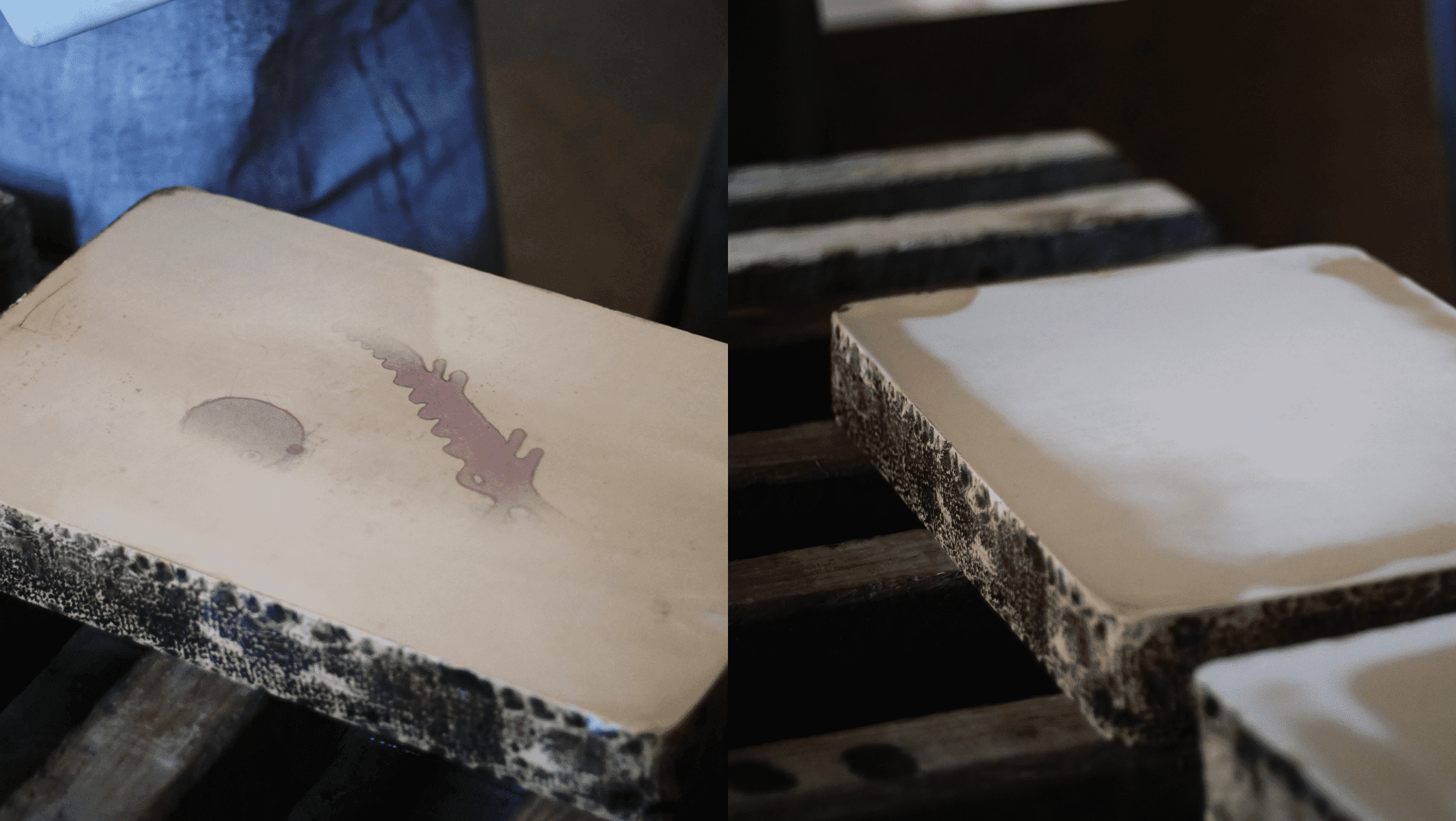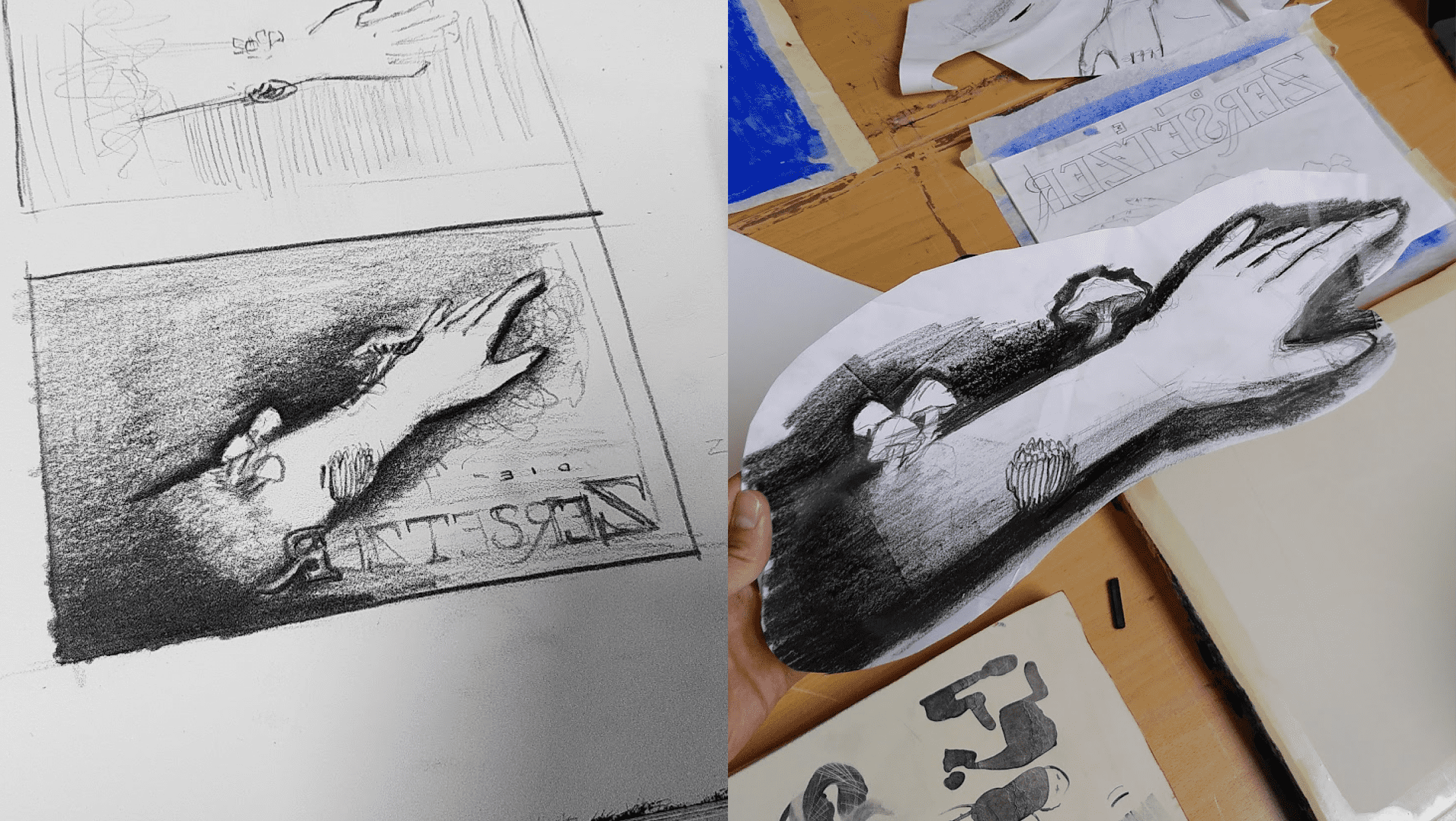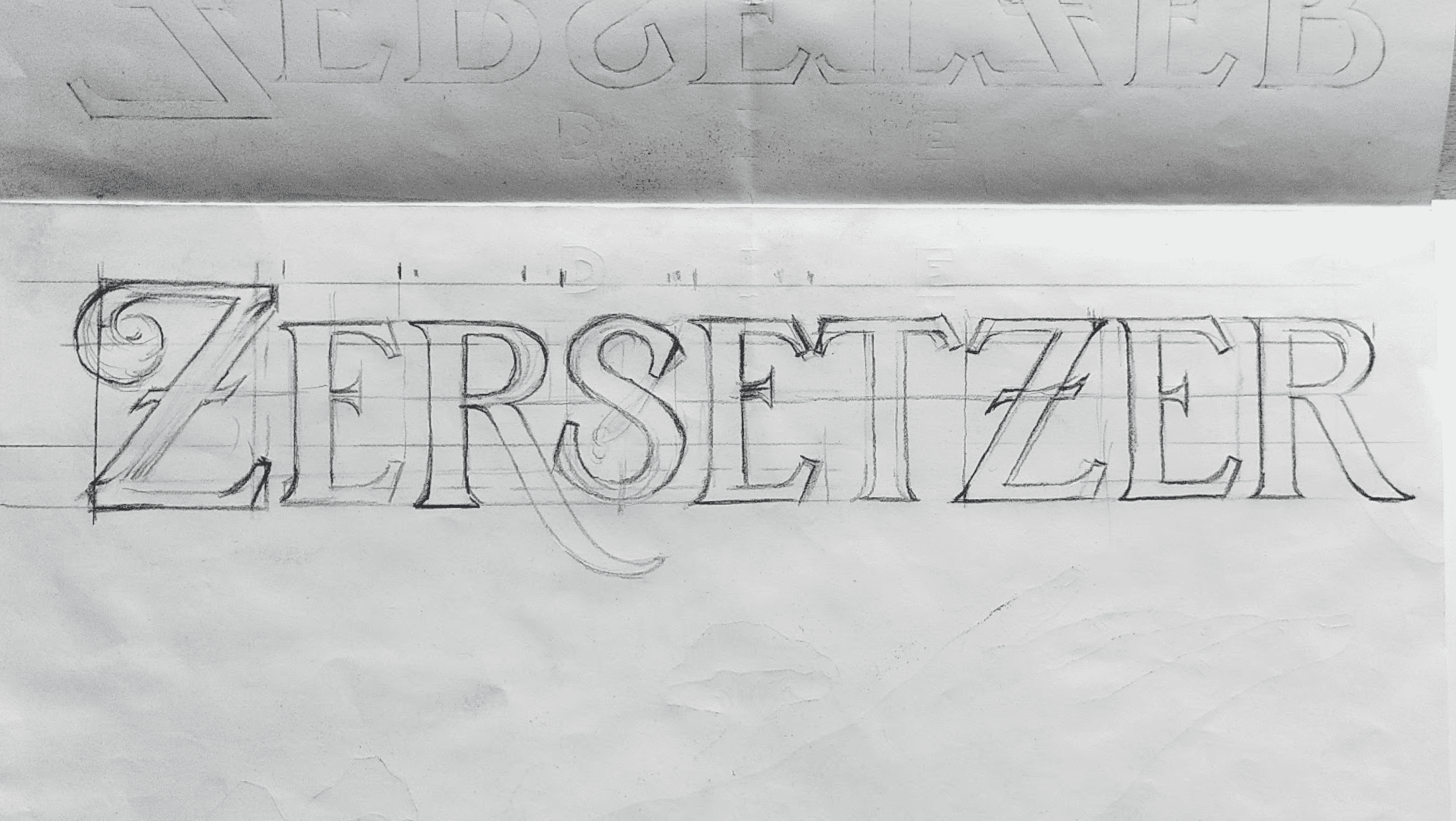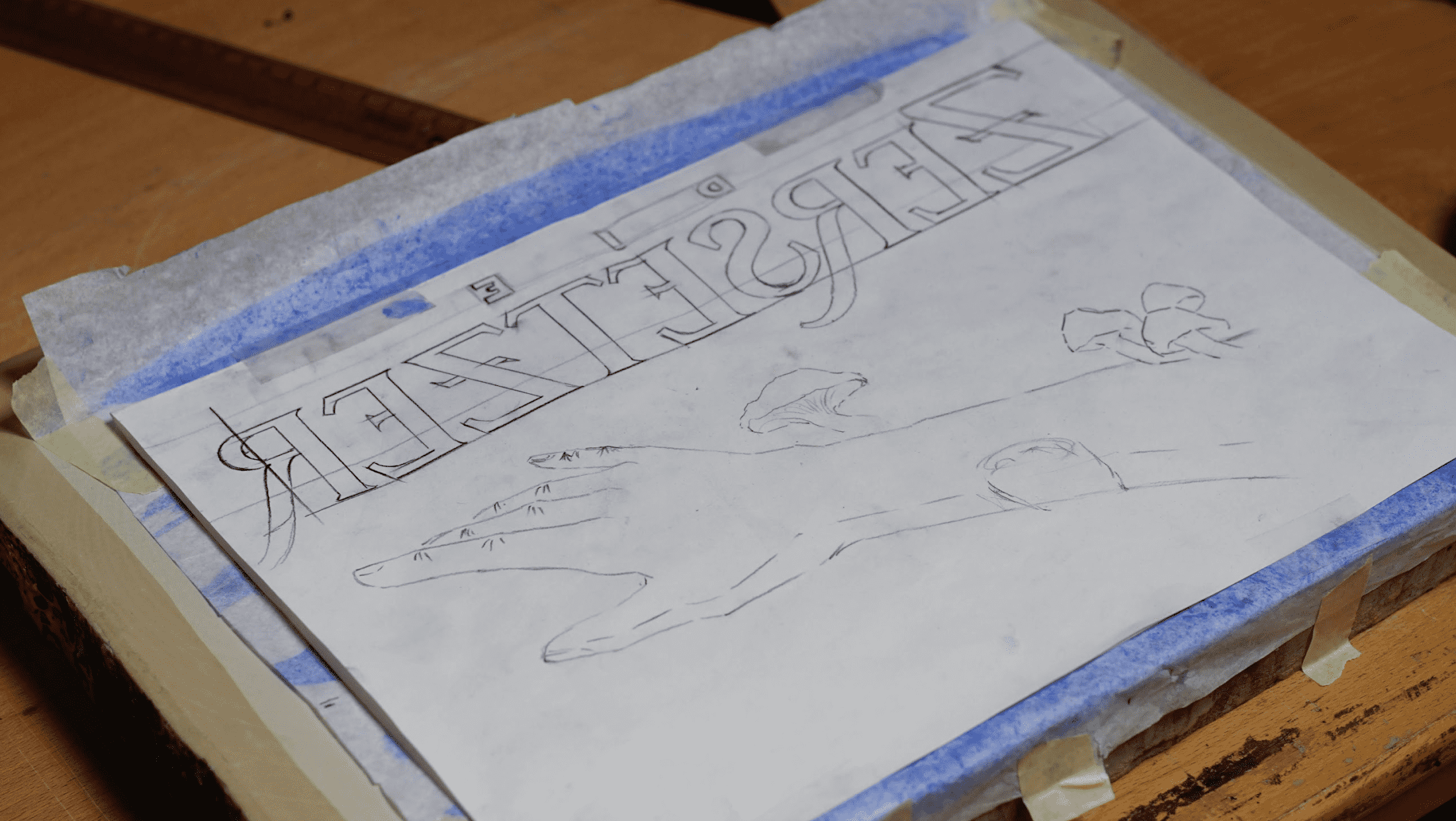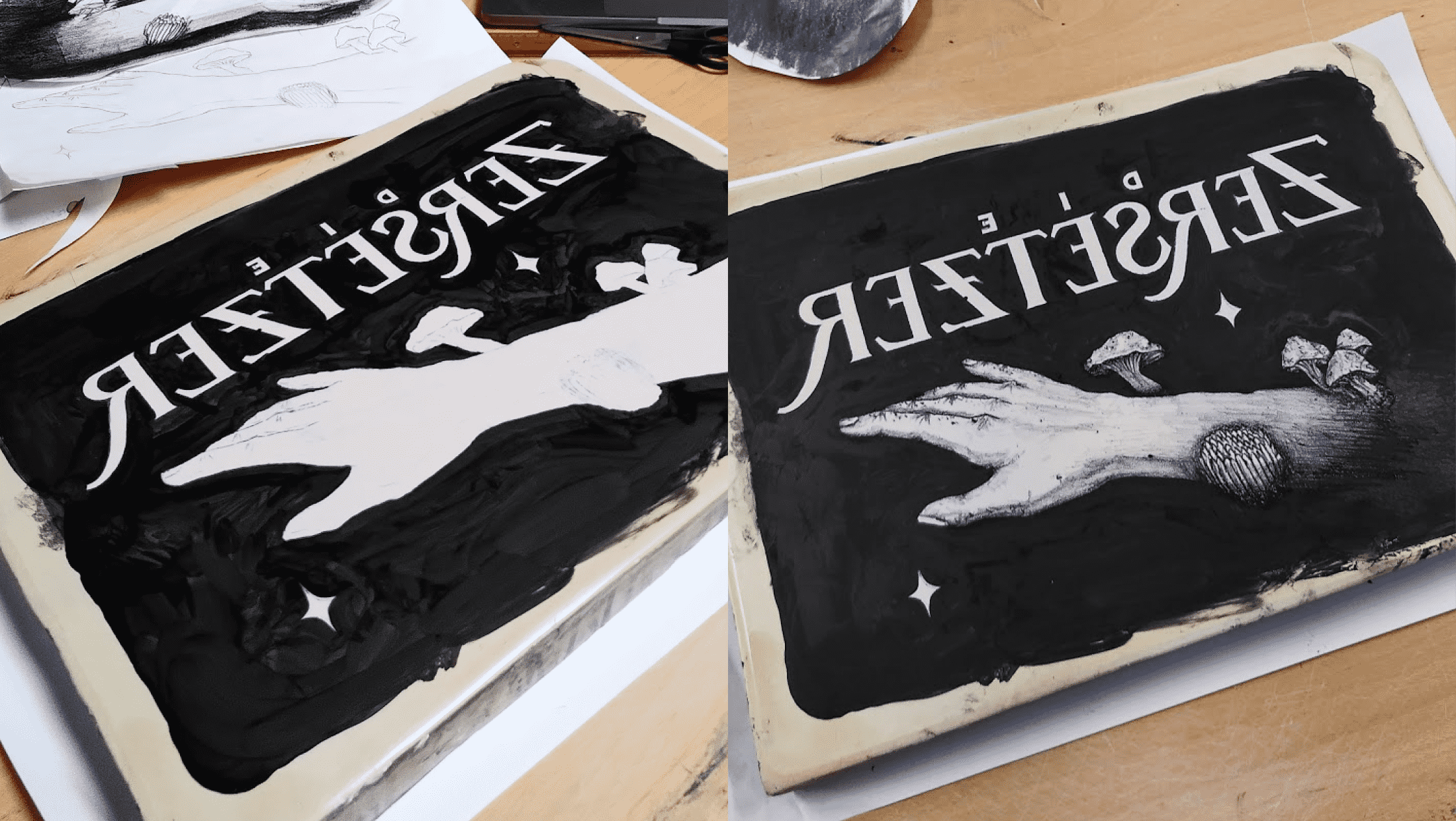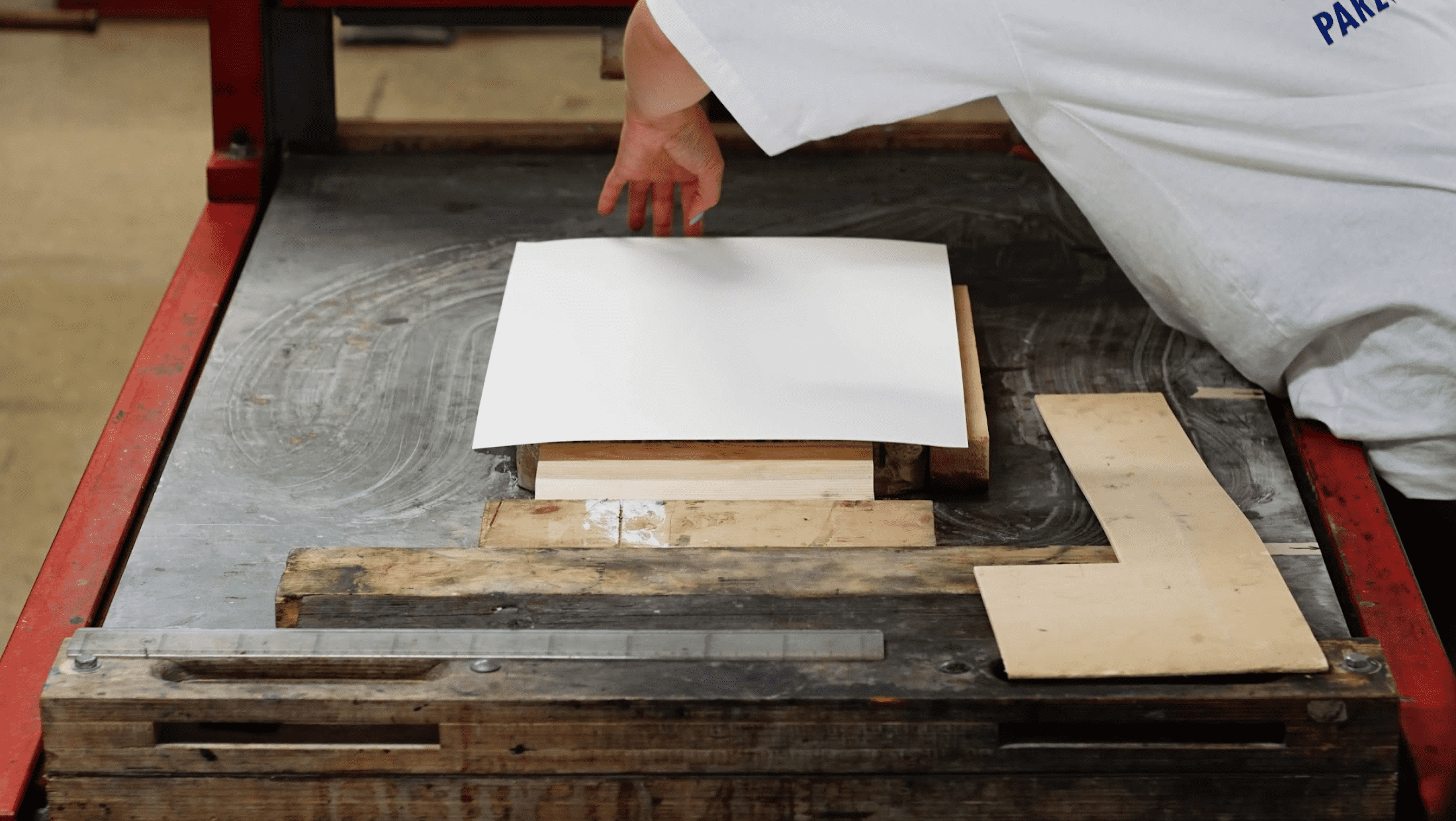Zersetzer, Symbionten, Verwerter
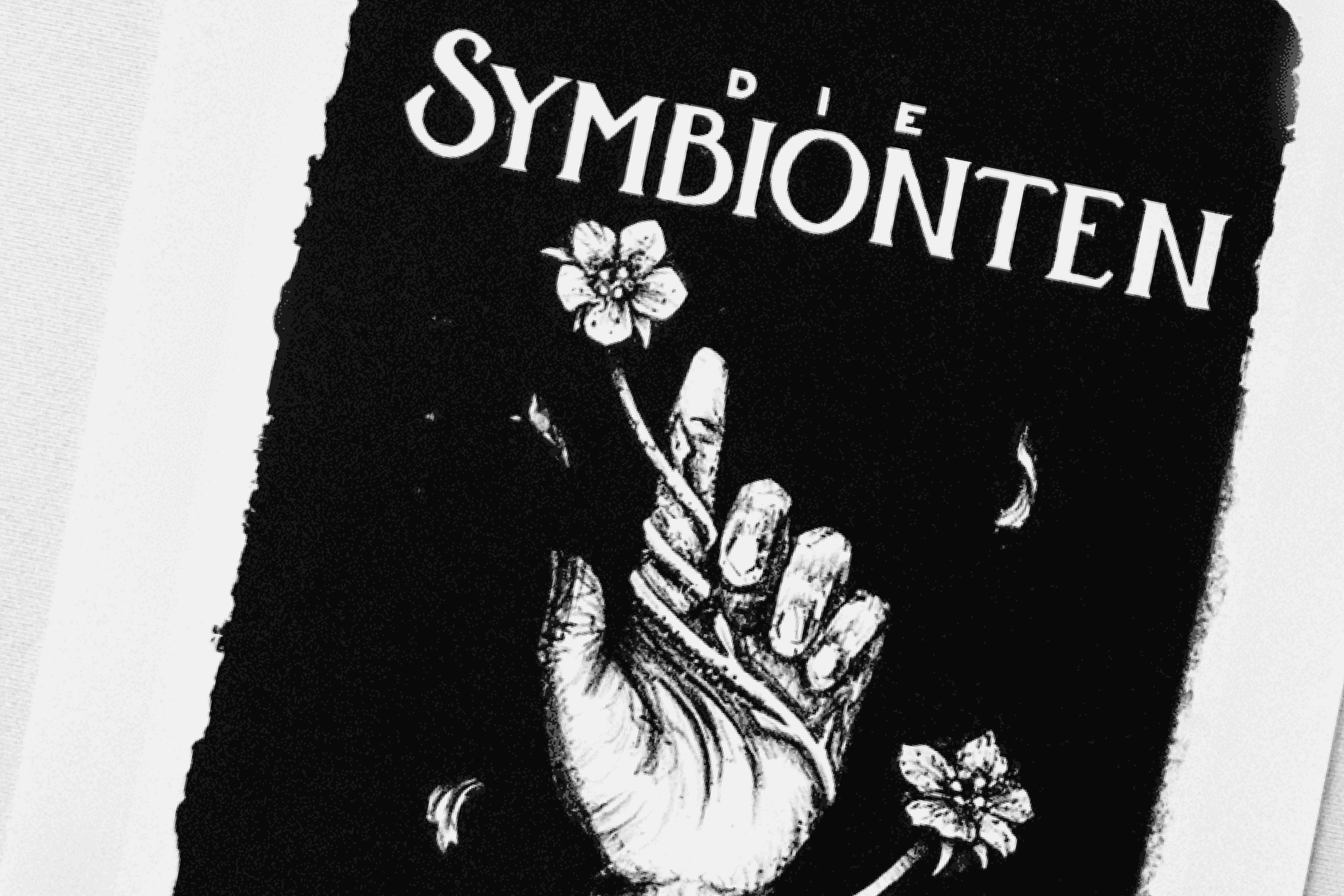
Artwork
A series of pen-and-ink lithographs, developed and printed in a traditional workshop in Tidaholm, Sweden. Each motif was hand-drawn on stone and printed using the flat printing technique lithography – blending detailed illustration with a nice texture and depth you can only achieve with analog techniques
Reviving an old printing technique – Swedish style
Rumbling heavy stones around. Grinding and rasping them for hours with sands and stone work tools. Rinsing them with water every few minutes and drying them with manual fans. Repeating that same process for hours. Applying thick oily pastes and gum to the stone. Speckling them with chemicals, acid and lamp oil repeatedly.
Sounds like hard work? It is! But why do all of this anyway? We are doing it to learn a printing technique that has been an industry-wide standard for centuries - the technique of lithography.
Lithography (roughly translates to "stone printing") is a flat printing technique. This means that you print an image with a flat surface. In this case, with a flat stone. It’s a chemical printing process: the basic principle behind it is that oil repels water. Most likely, you once tried mixing both - doesn't work so well. In Lithography, only certain areas of the stone that were specifically prepared take up the oily ink. Metaphorically spoken, the stone has a "memory" of where the ink touched it.
In the following, I’ll take you with me on the process of printing a lithography from sketch to finished print.
- Step 01 – Planning the series
- Step 02 – Preparing the stones
- Step 03 – Bringing the motif to the stone
- Step 04 – Preparing the stone for printing
- Step 05 – Printing
- The final edition
Step 01 – Planning the series
Some like it more to paint into the blue – being a bit more of a planner, I took a bit of time to work out a concept for my series.
The series focuses around the interconnection of humans and nature. We are part of nature, part of the natural cycles and the ecosystem, no matter how far we try to separate us from it. All different kinds of organisms live in strong interconnection and interdependence – plants, animals, fungi, even the smallest microbes, they all play an important role in our ecosystem. In each of the three motifs of the series, I pick out one group of organisms and set it in relation with human hands to underline our dependency with nature.
Step 02 – Preparing the stones
Creating a lithography from scratch takes a lot of time and physical effort. The first step, before you can transfer a motif onto a stone, is to plan the size of the print and to find matching stones. The stones for lithography come in different forms and sizes, from postcard-size to huge plates that one person can not carry alone.
Step 03 – Bringing the motif to the stone
Everything smooth and clean? Excellent. Now it’s time to get the art on the stone. The most crucial part of the long process is, of course, bringing your motif onto the stone without messing it up. I started with drawing small thumbnail sketches until the composition felt just right for me. Then I worked out the detailed sketch, matching to the actual size and proportion of the stone.
Step 04 – Preparing the stone for printing
In order to reproduce the artwork, the stone now has to be prepared with several chemical powders and tinctures. Different lithographers have slightly varying approaches to this process, but they all serve the same purpose – making the stone open to take up the ink where it should be, and repel the ink where it should not. In the process, chemicals get applied in a specific order: colophony and tackum powder, acid, gum arabic, lamp oil, and more. The process will not be explained in detail here, it should just give an impression on how the stone is worked with.
Step 05 – Printing
We are ready to print! Now all our efforts pay off and become a printed lithography series. The first step in the process is to apply the printing ink onto the stone. This is done with an ink roller. Before applying, the stone is made wet with a sponge. Usually, you repeat this step until you have applied enough ink. As my motif should be pitch black and saturated, I rolled on ink about four times for each print.
After inking the stone, the paper is placed on it. This too must be done carefully, as the position can not be adjusted anymore when the paper has touched the ink. To position it evenly, a frame can come in handy.
Usually, the prints will be air-dried for a few days. The oil-based ink takes longer to dry than regular, water-based inks.
The final edition
While working in the Swedish workshops, I’ve printed a series of three motifs. The edition is limited to 15 prints each, every print numbered and signed.
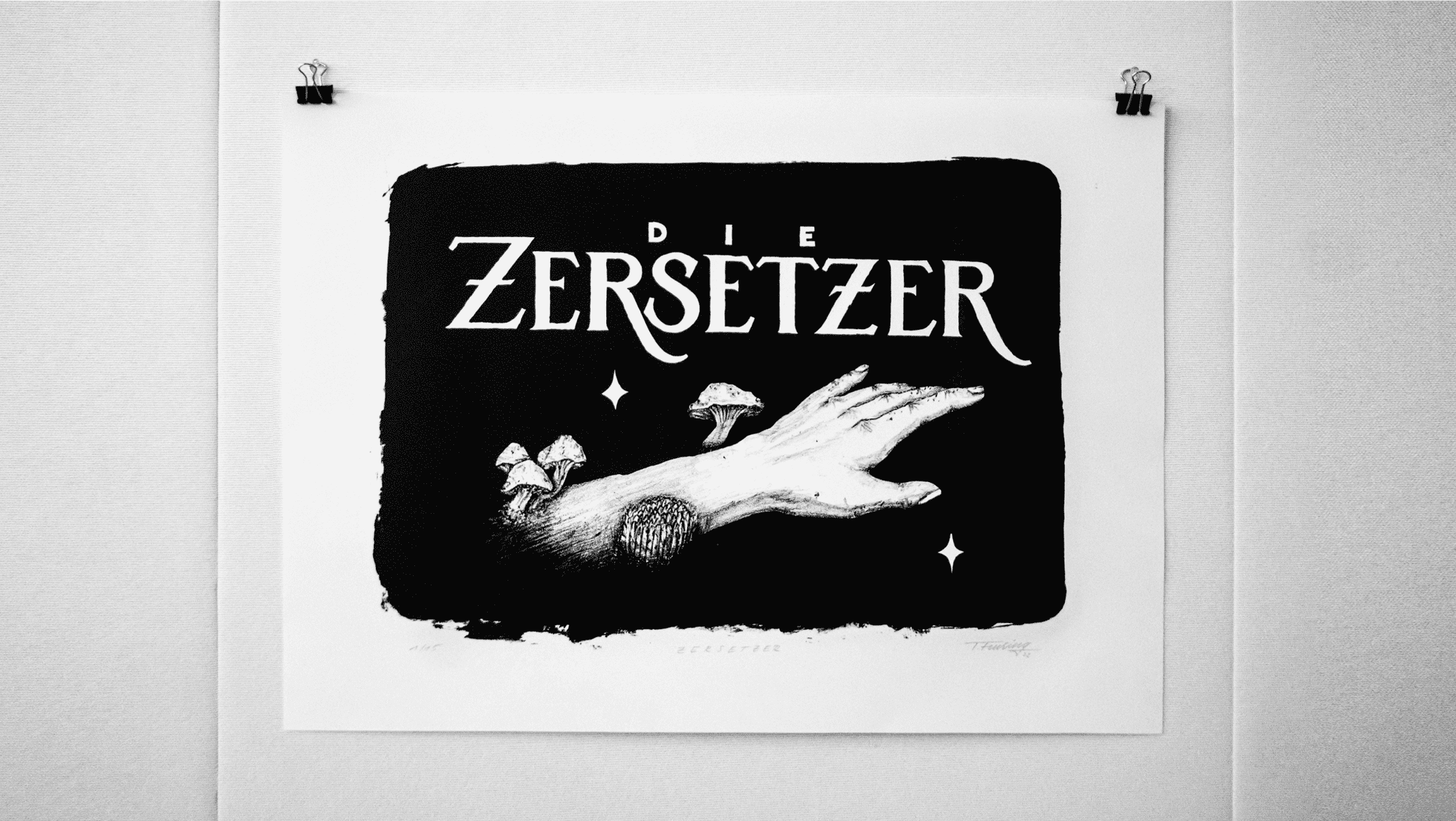
I. Die Zersetzer (engl. decomposers)
Fungi are the garbage disposal of nature, decomposing dead organisms and recycling organic matter into fertile soil. The first artwork showcases the important role of fungi in our ecosystem.
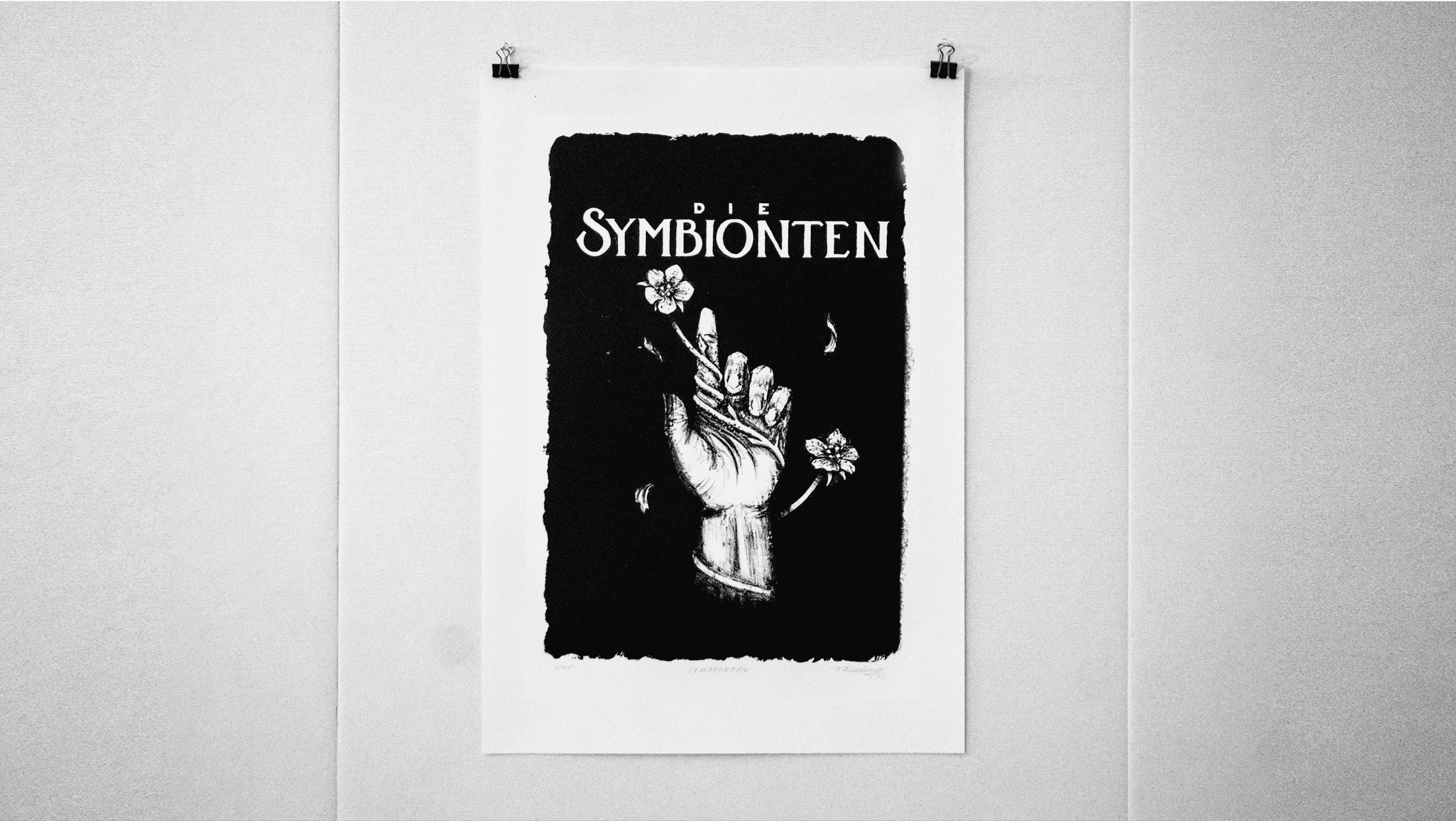
II. Die Symbionten (engl. symbionts)
Living together in harmony and benefitting from each other – that’s one of the more beautiful sides of nature. In my second artwork, I want to lay emphasis on this peaceful aspect by combining the rising human hand with uplifting flora.

III. Die Verwerter (engl. utilizers)
Spiders, bugs, caterpillars, snails – often unfairly underestimated and overlooked because they look strange and disgust us. But they as well play a vital role for our lives – and be it by snatching mosquitos out of the air for us so we can enjoy our summer nights in peace.
In addition to the great workshops, I was lucky to get my series featured in a Swedish newspaper article together with some of my fellow students.
 Swedish newspaper featuring the printing series
Swedish newspaper featuring the printing series
I hope you enjoyed this journey into the world of lithography and my printing series. I created this work as a part of the seminar "Der Rote Faden" under the guidance of Prof. Ellen Sturm in Tidaholm Sweden, summer 2022. Thanks for reading! 😊


